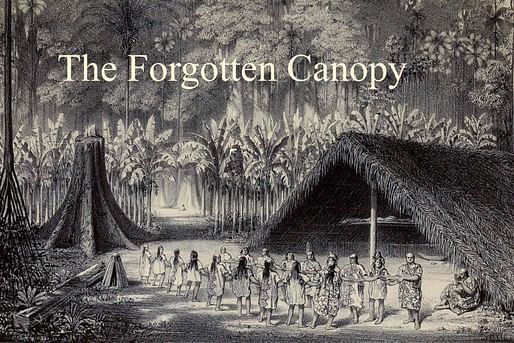

A new project led by Florida State University associate professor Paul Niell is working to retrace the lineage of thatch work architectures used by different African and Indigenous diaspora groups throughout the Americas in the hopes of documenting and preserving their impact on history for future generations of scholars.
Niell teaches Caribbean art and architectural history in the school’s College of Fine Arts with a focus on the architecture and cultural landscapes of the Hispanophone Caribbean in the late-18th and early-19th centuries.
Recently, he coordinated with UCLA associate professor Stella Nair, several graduate students, and representatives of different Indigenous groups to organize a three-part conference titled “Forgotten Canopy: Ecology, Ephemeral Architecture, and Imperialism in the Caribbean, South American, and Transatlantic Worlds,” that provided a framework for further study into the vernacular domestic structures that predominated in both regions.
Niell’s colleague Michael Carrasco explains: “This conference series brings to light this understudied area of architectural history at precisely a moment when we need to most think about the material sustainability of our daily lives within the context of global environmental degradation, inequity, and climate change.”
Each conference was supplemented by workshops backed by the Terra Foundation for American Art and Shannon Speed of UCLA’s American Indian Studies Center.
Niell says in the end: “We learned so many new things about these neglected architectural traditions of the Americas this year. The program underscored the importance of an interdisciplinary approach to the topic. Our conferences and workshops also exposed the vital importance of considering the perspectives of Indigenous knowledge keepers and other community members when we approach and think about this kind of architecture.”
Niell and his collaborators hope the results will herald a new path for those connected to each other by the conference, as well as an enhancement of the role and perception of its topic throughout the broader architectural academic landscape.
As he says: “Our approach also challenged academics to consider local knowledge, exposing disciplinary linkages.”
“The Forgotten Canopy is making strides toward addressing critical blind spots in our field when it comes to the study of architecture, as well as preserving valuable knowledge for future generations,” FSU Art History department chair Lorenzo Pericolo added.
A full resource of the results of the conference can be found here.
No Comments
Block this user
Are you sure you want to block this user and hide all related comments throughout the site?
Archinect
This is your first comment on Archinect. Your comment will be visible once approved.